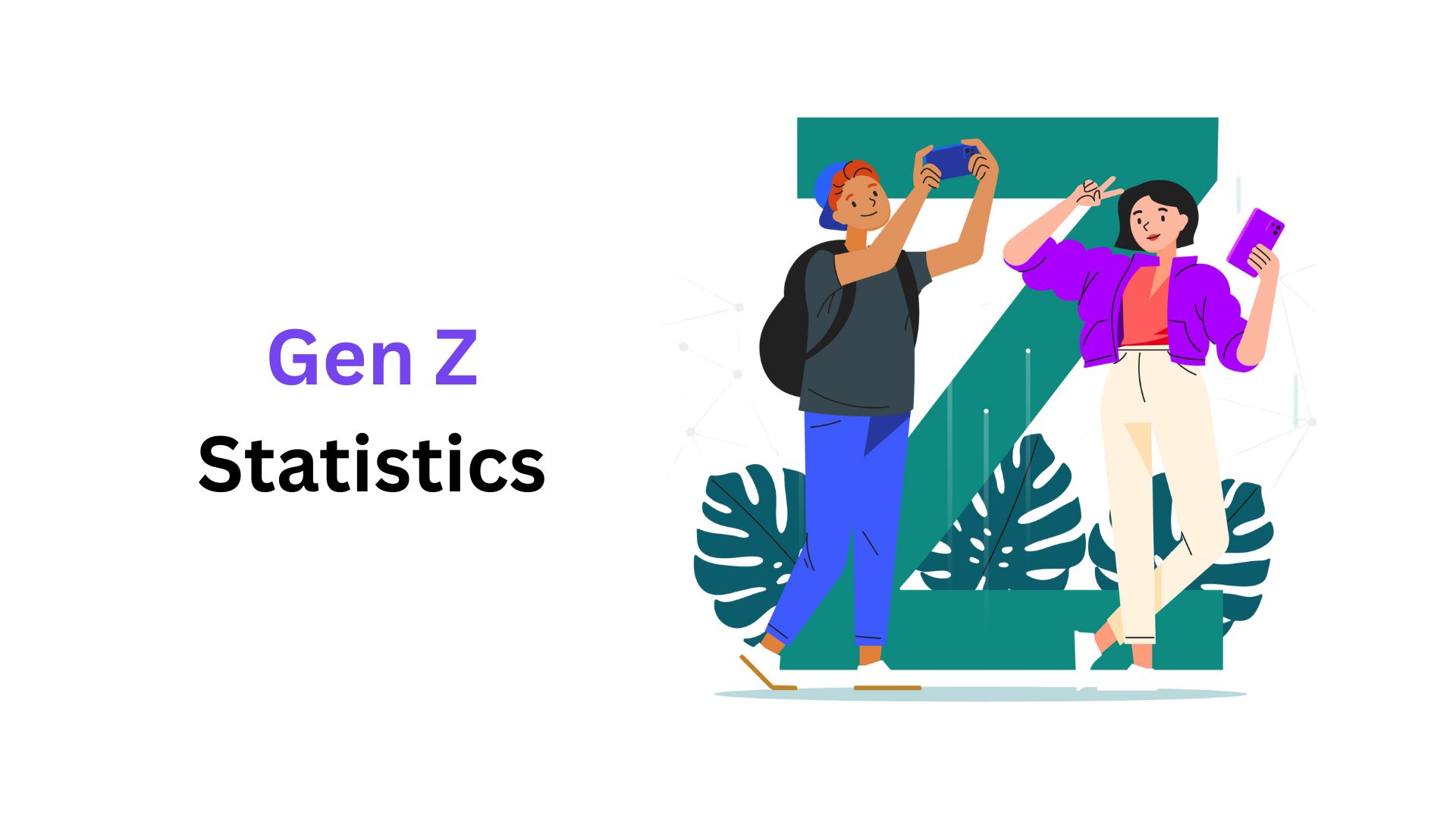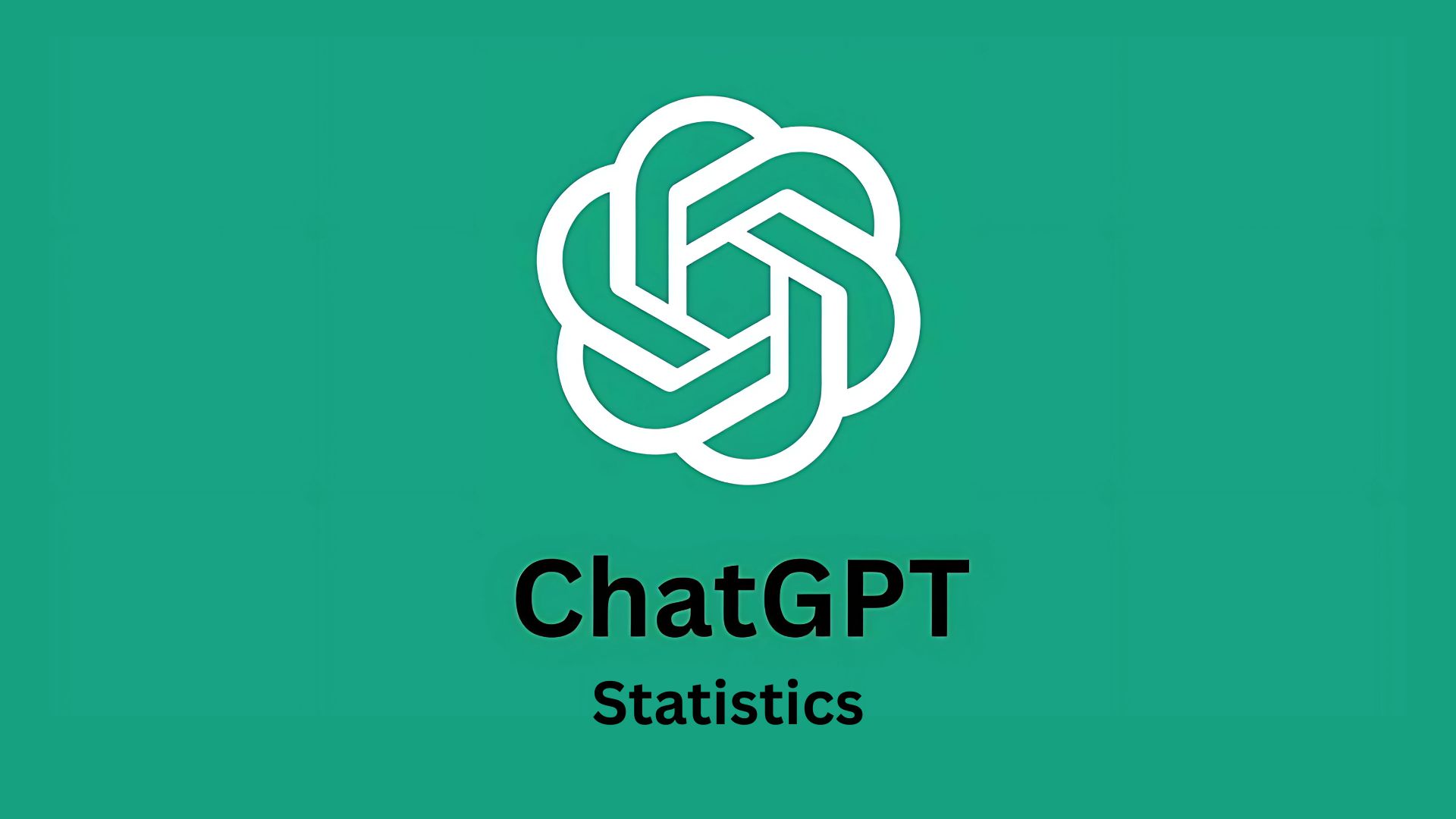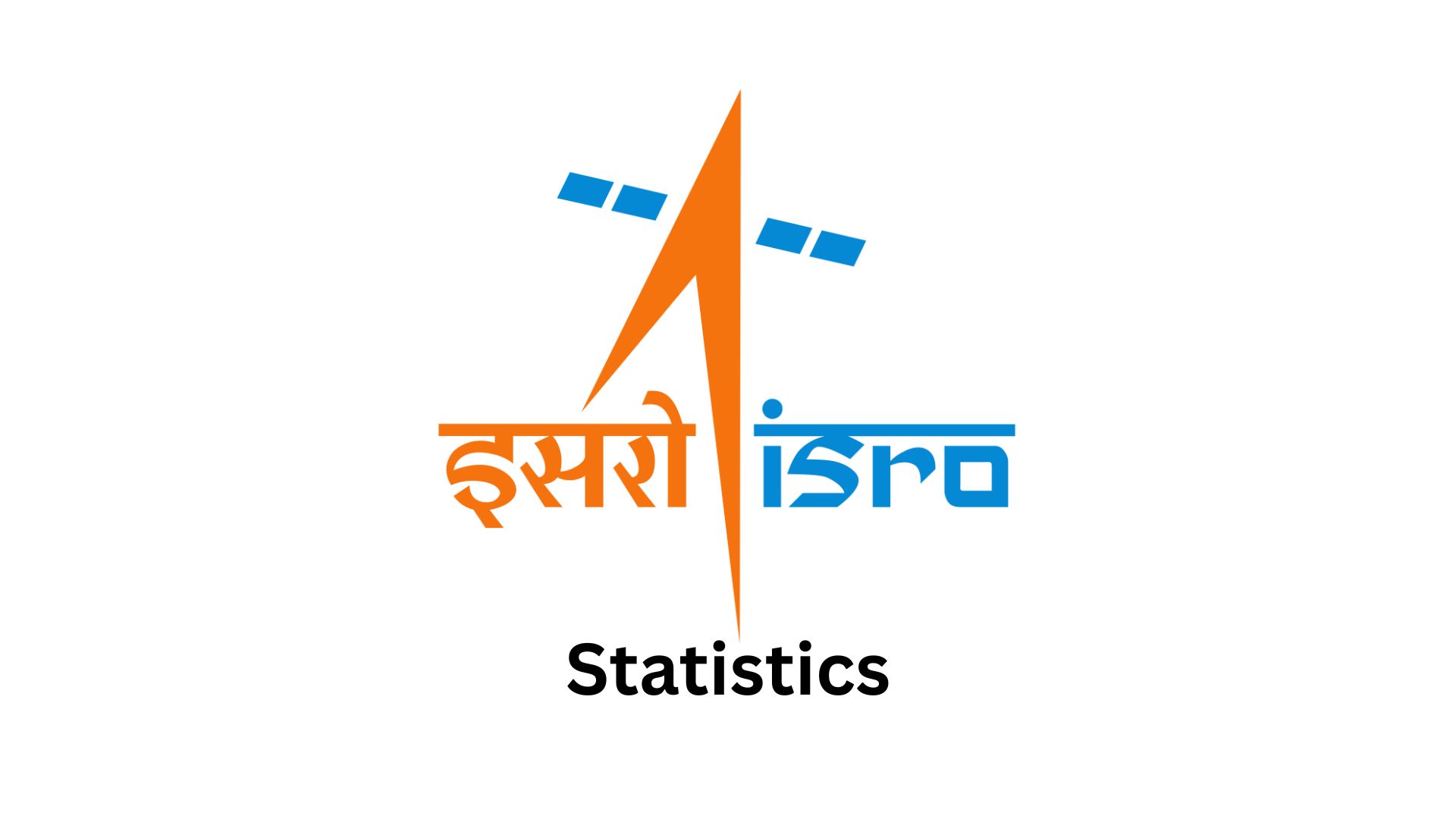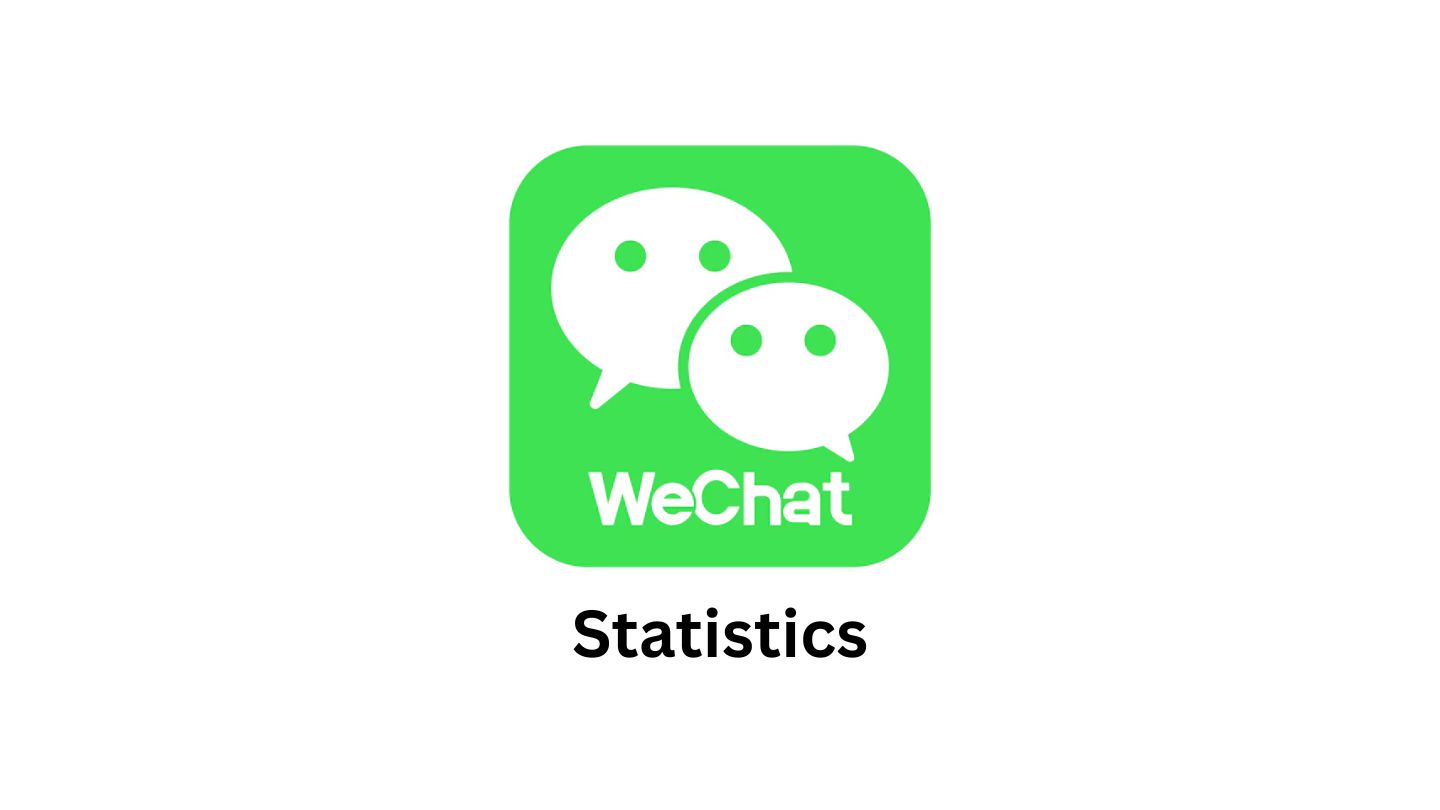Cell Phones At Workplace Statistics By Usage and Facts
Updated · Dec 19, 2024

Table of Contents
- Introduction
- Editor’s Choice
- Average Mobile Time
- Smartphone Usage During Work Frequency
- Time Spent on The Phone By Region
- Smartphone User Growth Worldwide
- Smartphone Usage Reasons
- Companies Providing Employees With Cellphone
- Cell Phone Productivity Loss
- Cell Phone By Industry
- Phone At-Work Examples
- Disadvantages of Cell Phone Usage at Work
- Sustainable Initiatives for Smartphone Usage
- Conclusion
Introduction
Cell Phones At Workplace Statistics: The use of cell phones in the workplace has become prominent and common over the years. For the most part, it has attracted various schools of thought regarding the legitimacy of whether or not a specific policy is required to limit the time when cell phones are used.
Likewise, we will focus on the relevant measures that companies have enabled regarding phone usage policies. Accordingly, we will notice the primary factors that show the importance of maintaining a link between productivity and management.
Editor’s Choice
- US leads global phone usage with 7 hours 59 minutes daily combined media time
- Smartphone usage at work increased from 1:38 hours in 2014 to 3:46 hours in 2022
- Indonesia tops global smartphone usage with 6.14 hours daily in 2022
- Global smartphone users expected to reach 6 billion by 2027
- 61% of users use mobile phones for private purposes during office hours
- Only 17% of companies provide mobile phones to all employees
- India reports 65% productivity loss due to phone usage at work
- The Telecommunications industry leads with 3.5 hours of average daily phone usage
- Personal messaging tops workplace phone activities at 65%
- China has the highest proportion (80%) of companies with phone policies
- The refurbished smartphone market is projected to reach $65 billion by 2024
- 35% of users utilize smartphones for work-related tasks during working hours
- The UK averages 5 hours of mobile phone usage during work
- 24% of employees use phones for gaming at work
- 41% of users never use smartphones for private reasons
Average Mobile Time

(Source: emarketer.com)
- Cell Phones At Workplace Statistics show that the United States has the highest usage of phones among the population, with 7 hours 59 minutes compared to 5 hours 13 minutes using traditional media, amounting to a total of 13 hours 12 minutes.
- In the UK approx, 5 hours are spent working with Mobile phones.
Smartphone Usage During Work Frequency
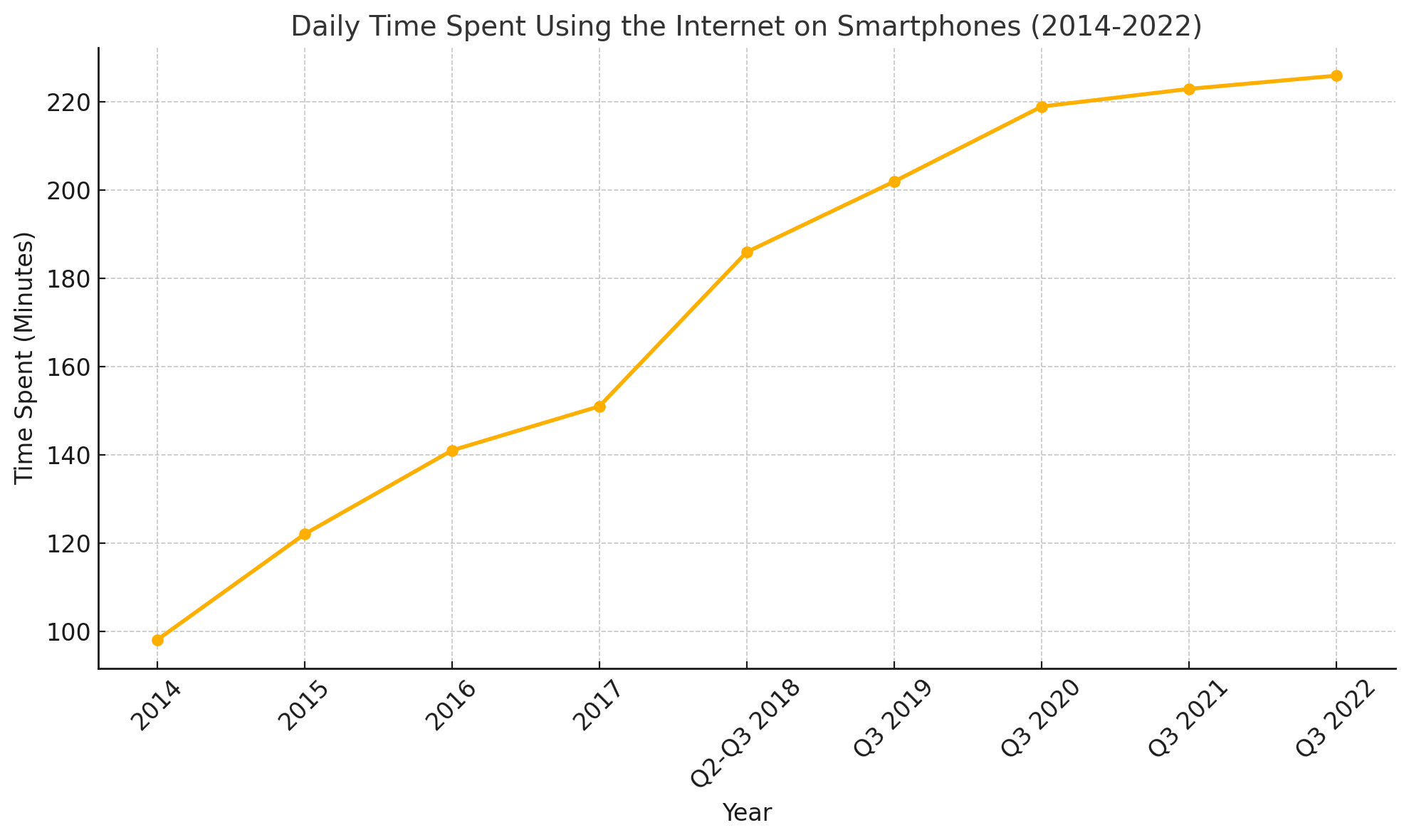
(Source: backlinko.com)
- In 2014, employees spent an average of 1 hour and 38 minutes per day using smartphones at work.
- This average increased to 2 hours and 2 minutes per day in 2015.
- By 2016, the daily smartphone usage at work rose to 2 hours and 21 minutes.
- In 2017, it further increased to 2 hours and 31 minutes per day.
- The daily average reached 3 hours and 6 minutes during the second and third quarters of 2018.
- By the third quarter of 2019, it had grown to 3 hours and 22 minutes.
- In the third quarter of 2020, daily usage averaged 3 hours and 39 minutes.
- By the third quarter of 2021, it slightly increased to 3 hours and 43 minutes.
- In the third quarter of 2022, the average daily smartphone usage at work was 3 hours and 46 minutes.
Time Spent on The Phone By Region
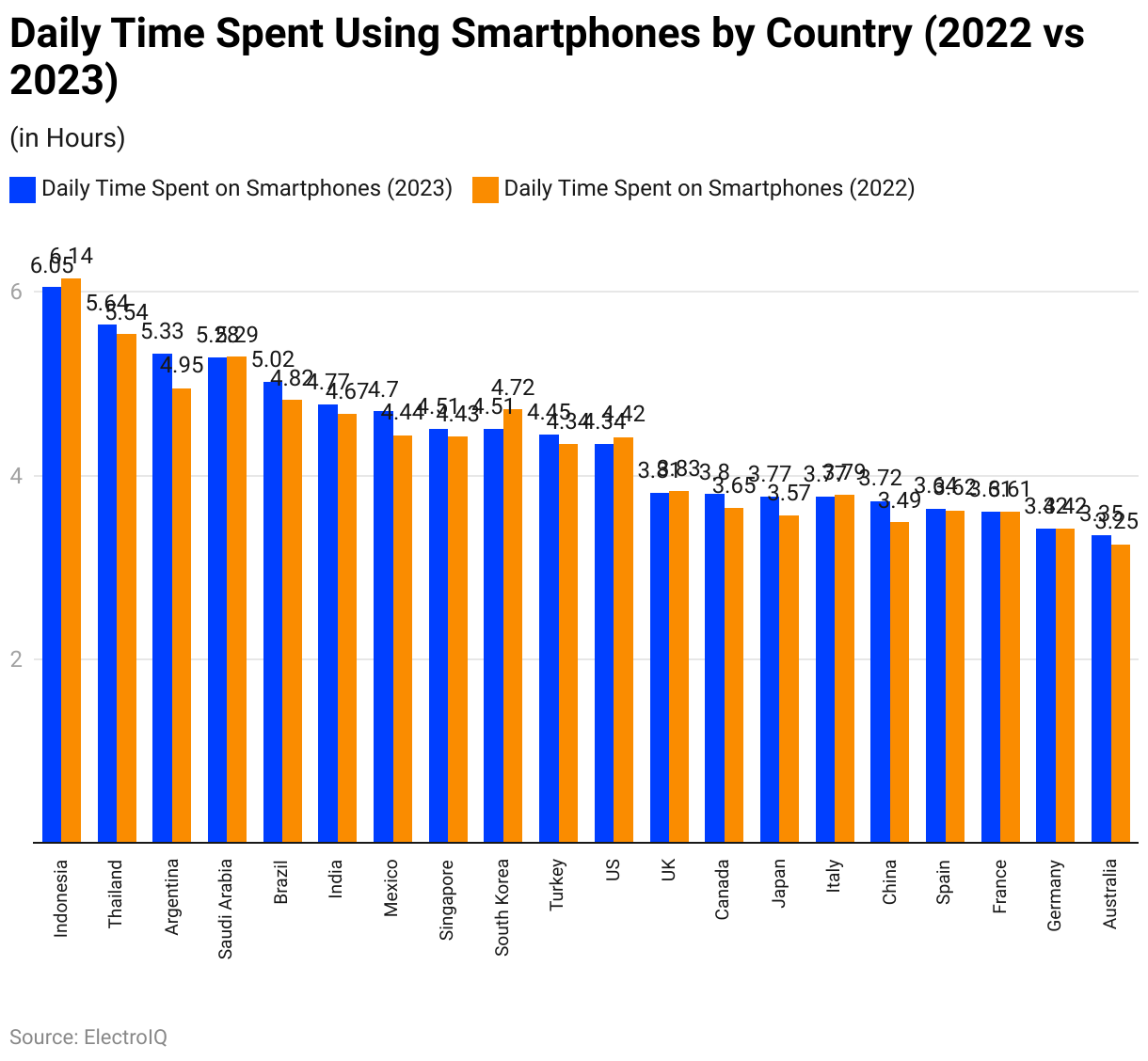
(Reference: backlinko.com)
- In Indonesia, individuals spent an average of 6.14 hours daily on smartphones in 2022, slightly reducing to 6.05 hours in 2023.
- Thailand saw daily smartphone usage of 5.54 hours in 2022, which increased to 5.64 hours in 2023.
- Daily smartphone usage in Argentina rose from 4.95 hours in 2022 to 5.33 hours in 2023.
- In Saudi Arabia, daily usage increased from 4.82 hours in 2022 to 5.28 hours in 2023.
- Brazil recorded 4.82 hours of daily smartphone use in 2022, which grew to 5.02 hours in 2023.
- In India, daily usage was 4.67 hours in 2022, increasing slightly to 4.77 hours in 2023.
- Mexico saw an increase from 4.44 hours daily in 2022 to 4.7 hours in 2023.
- Daily smartphone usage in Singapore was 4.43 hours in 2022, rising to 4.51 hours in 2023.
- In South Korea, daily usage decreased from 4.72 hours in 2022 to 4.51 hours in 2023.
- Turkey’s daily smartphone hours increased from 4.34 hours in 2022 to 4.45 hours in 2023.
- In the US, daily usage slightly decreased from 4.42 hours in 2022 to 4.34 hours in 2023.
- UK residents spent 3.83 hours daily on smartphones in 2022, slightly decreasing to 3.81 hours in 2023.
- Canada saw an increase in daily smartphone usage from 3.65 hours in 2022 to 3.8 hours in 2023.
- In Japan, daily usage went from 3.57 hours in 2022 to 3.77 hours in 2023.
- Italy recorded 3.79 hours of daily usage in 2022, which slightly decreased to 3.77 hours in 2023.
- China saw an increase from 3.49 hours daily in 2022 to 3.72 hours in 2023.
- In Spain, daily smartphone usage slightly increased from 3.62 hours in 2022 to 3.64 hours in 2023.
- France maintained steady daily smartphone usage at 3.61 hours in both 2022 and 2023.
- Germany’s daily usage remained constant at 3.42 hours across both years.
- Australia recorded an increase in daily smartphone usage from 3.25 hours in 2022 to 3.35 hours in 2023.
Smartphone User Growth Worldwide
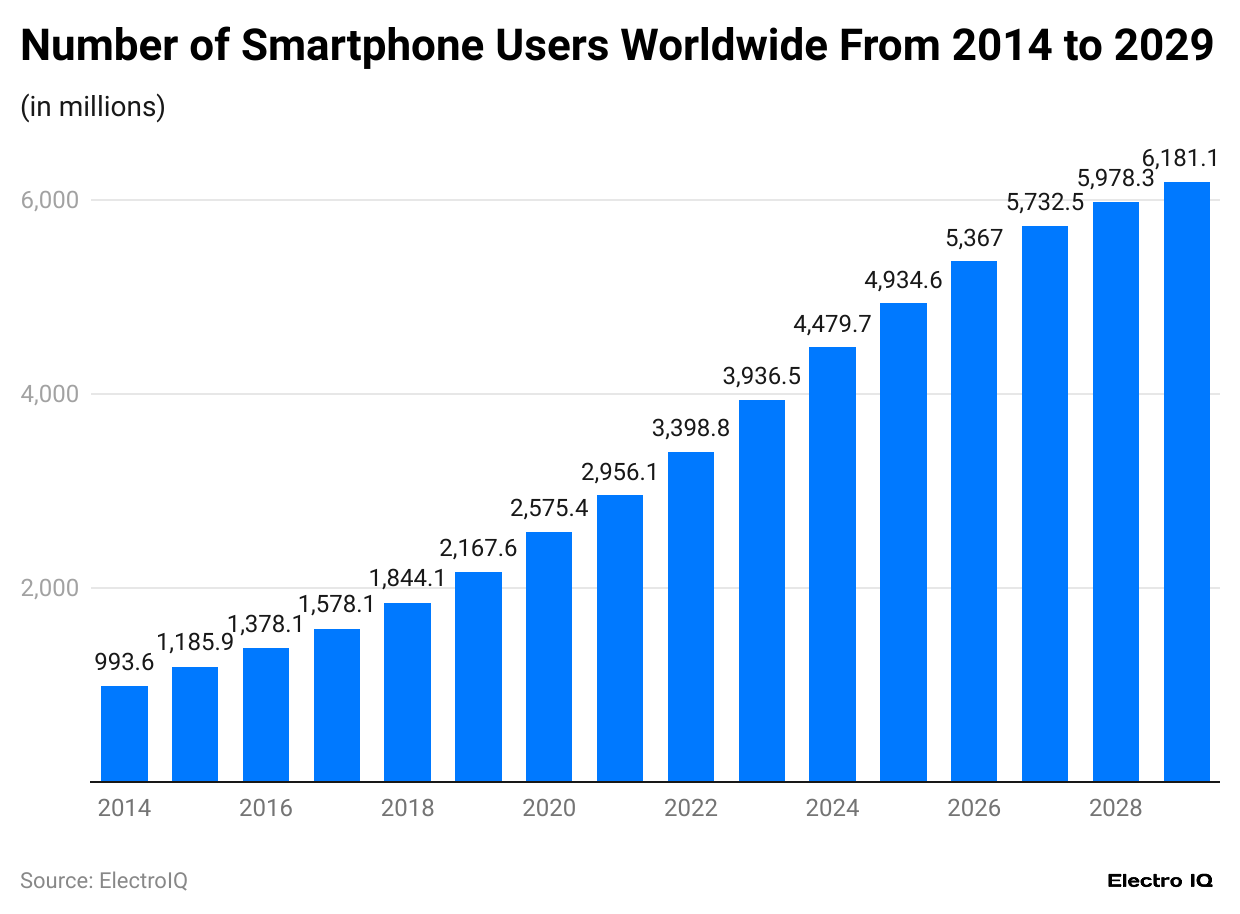
(Reference: statista.com)
- In 2014, the global count of smartphone users stood at 1 billion.
- The number rose to 1.22 billion in 2015.
- By 2016, smartphone users increased to 1.43 billion.
- There were 1.66 billion smartphone users in 2017.
- The count reached 1.94 billion in 2018.
- In 2019, smartphone users grew to 2.27 billion.
- The figure expanded to 2.67 billion in 2020.
- By 2021, the number of smartphone users reached 3.01 billion.
- In 2022, smartphone users surged to 3.62 billion.
- The count reached 4.25 billion in 2023.
- Projections indicate that by the end of 2027, there will be 6 billion smartphone users.
Smartphone Usage Reasons
(Source: iacis.org)
- Cell Phones At Workplace Statistics show that there is a wide variety of reasons why employees use smartphones.
- Regarding private uses, 47% of respondents are the majority.
- 41% of users never use smartphones for private reasons.
- 41% of users use smartphones for private use during working days but outside.
- 61% of users used mobile phones for private uses during office and working hours.
- 35% of users use smartphones for work-related tasks during working hours.
Companies Providing Employees With Cellphone
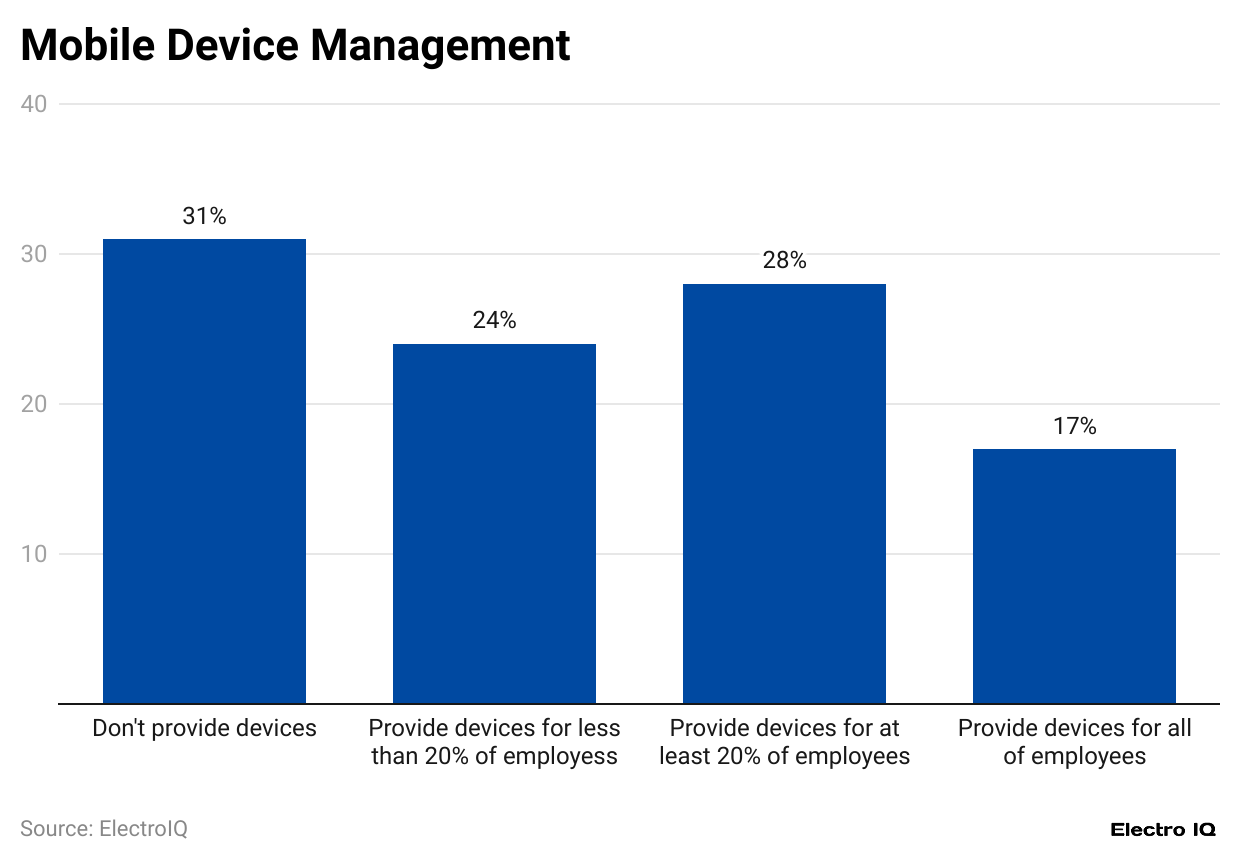
(Reference: 99firms.com)
- Cell Phones At Workplace Statistics show that different companies have various policies regarding cell phone usage at the workplace.
- 31% of respondents said that their company does not provide devices.
- 24% of respondents said that only 20% or fewer employees are provided mobile phones.
- 28% of respondents said that at least 20% of employees in the company are provided with cell phones.
- For 17% of respondents, the company provides mobile phones to all employees.
Cell Phone Productivity Loss
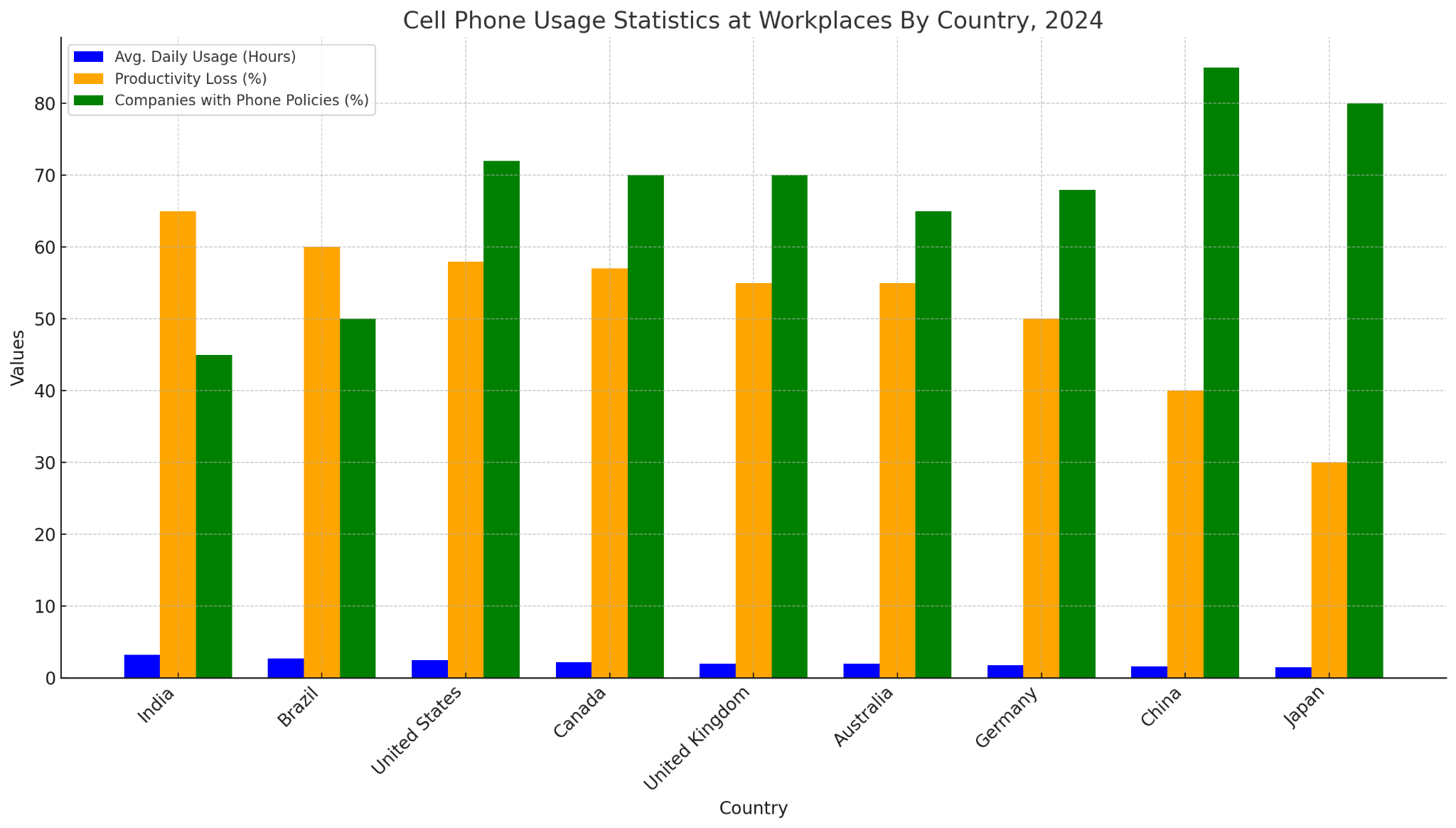
(Source: explodingtopics.com)
- Cell Phones At Workplace Statistics show a certain percentage of productivity loss due to mobile phone usage.
- India has the highest share of productivity loss, with 65%, whereas 45% of companies have phone policies.
- China has the highest proportion of companies with Phone policies, with 80%.
- Japan has the lowest proportion of productivity loss, with cell phone usage at work at 30%.
Cell Phone By Industry
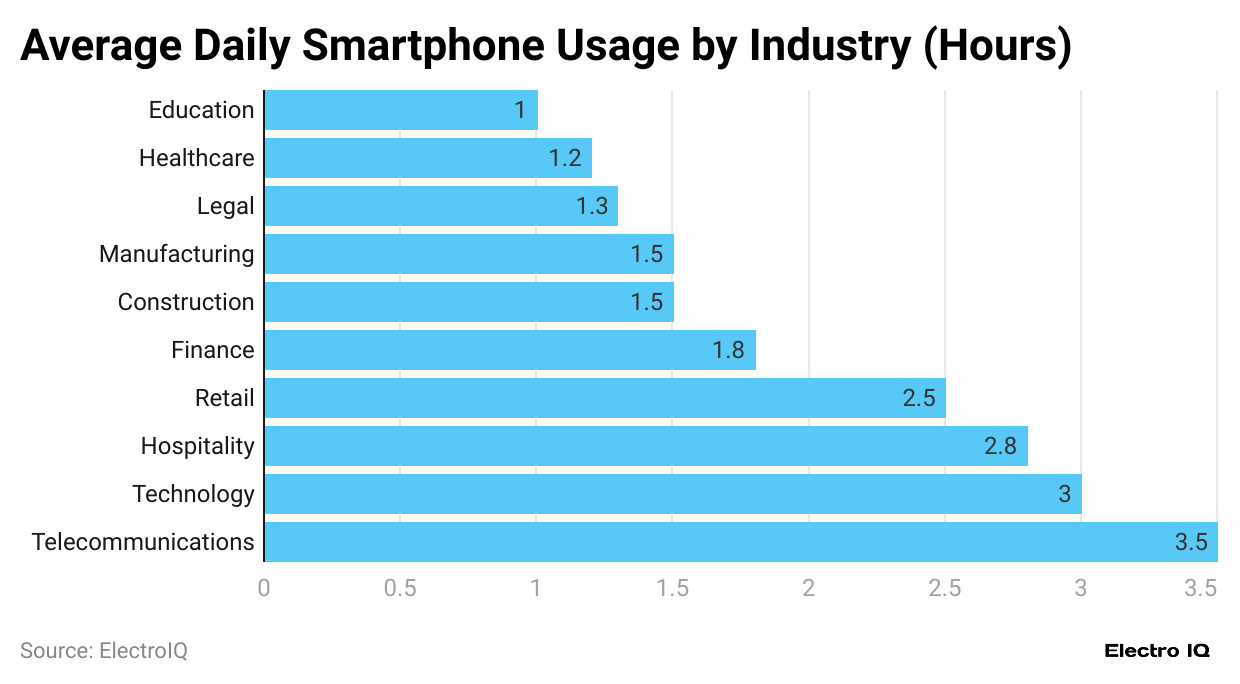
(Reference: explodingtopics.com)
- The telecommunications industry records the highest average cellphone usage at work with 3.5 hours daily.
- Employees in the technology industry use cellphones for an average of 3 hours each day.
- In the hospitality industry, the average daily cellphone usage is 2.8 hours.
- The retail industry sees an average daily usage of 2.5 hours.
- Average daily cellphone usage in the finance industry is 1.8 hours.
- Both the construction and manufacturing industries have an average daily usage of 1.5 hours.
- The legal industry's average daily cellphone usage is 1.3 hours.
- In the healthcare industry, the average is 1.2 hours daily.
- The education industry has the lowest average daily usage, at 1 hour.
Phone At-Work Examples
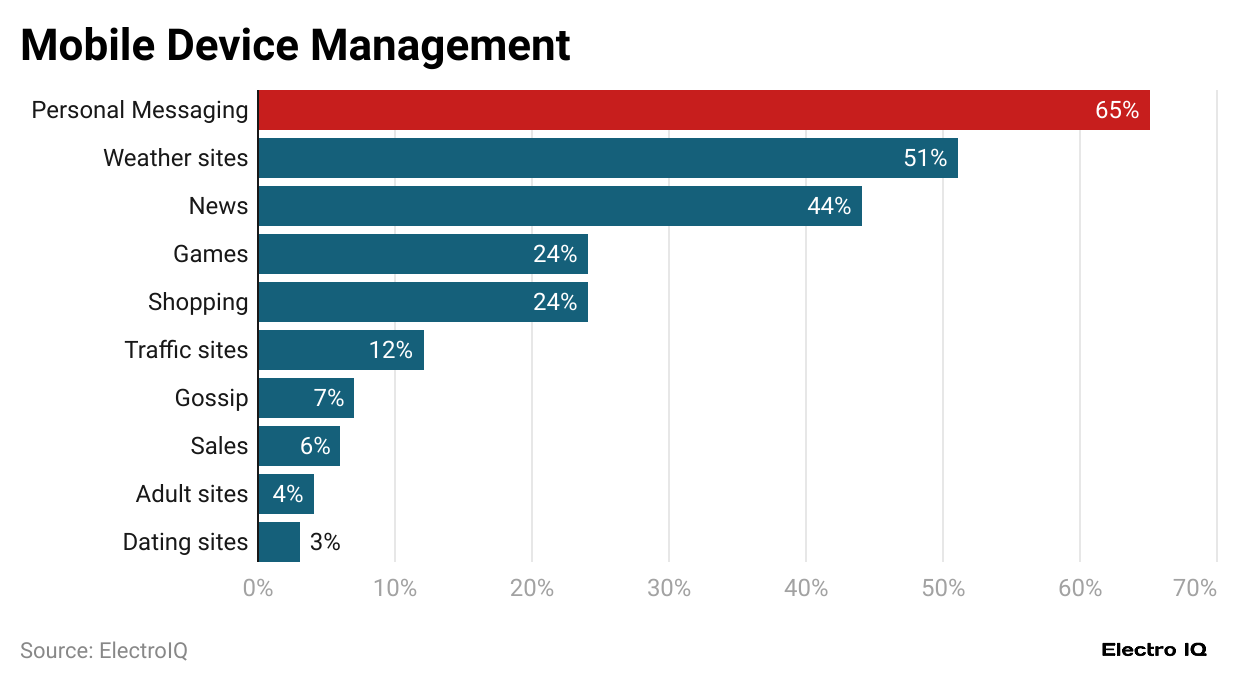
(Reference: 99firms.com)
- 65% of respondents use their cell phones at work primarily for personal messaging.
- 51% access weather-related websites using their cell phones while at work.
- 44% browse news sites on their cell phones during work hours.
- 24% engage in playing games on their cell phones at work.
- Another 24% use their cell phones for shopping while on the job.
- 12% visit traffic sites on their cell phones at work.
- 7% use their cell phones for gossiping during work.
- 6% use their cell phones for sales-related activities while working.
- 4% visit adult sites on their cell phones during work hours.
- 3% use their cell phones to access dating sites at work.
Disadvantages of Cell Phone Usage at Work
- Cell phone usage at work can lead to the distribution of overall workflow
- When the employee is always accessible with a phone, there is a chance that it could hamper their work-life balance.
- From the company’s perspective, it becomes challenging to ensure that they provide mobile phones that are strictly used for business purposes.
- Due to work pressure, employees are led to use phones even while doing high-concentration tasks like driving, which could lead to committing offenses and accidents.
(Source: nibusinessinfo.co.uk)
Sustainable Initiatives for Smartphone Usage
- Extended Device Lifespan: Companies are encouraging employees to use smartphones for longer periods, reducing the need for frequent replacements and minimizing electronic waste. This approach aligns with the growing refurbished smartphone market, which is projected to reach $65 billion by 2024.
- Adoption of Eco-Friendly Devices: Organizations opt for smarts made from sustainable materials. For instance, the Fairphone 5 features a user-repairable design and extended software support, promoting longevity and reducing waste.
- Enhanced Recycling Programs: Companies are implementing comprehensive recycling initiatives for outdated devices. A U.S. initiative announced in 2024 allocated $14 million to establish over 1,000 consumer battery collection sites, facilitating proper disposal and recycling of electronic devices.
- Energy-Efficient Technologies: Integrating energy-efficient 5G equipment in workplace devices reduces power consumption. Innovations such as Massive MIMO and beamforming enable higher efficiency, with new technologies allowing 5G radios to enter sleep mode when not in use, saving significant amounts of energy.
- Sustainable Procurement Policies: Businesses are adopting procurement policies prioritizing devices with lower environmental footprints, including those with longer lifespans and higher recyclability, contributing to overall sustainability goals.
(Source: MIT Sloan Management Review)
Conclusion
The idea of cell phone usage in the workplace reveals a complex landscape of technological integration and behavioral patterns. Cell Phones At Workplace Statistics showcases a consistent upward trend in smartphone usage across all regions and industries, with significant variations in duration and purpose.
Looking ahead, the projected growth in smartphone users to 6 billion by 2027 suggests that workplace phone usage will continue to evolve. The emergence of sustainable initiatives and eco-friendly approaches to device management represents a positive trend toward responsible technology use.
FAQ.
Americans spend approximately 4.34 hours daily on smartphones during work hours as of 2023.
The telecommunications industry leads with an average of 3.5 hours of daily usage.
17% of companies provide phones to all employees, while 31% don’t provide any devices.
Personal messaging is the top reason, with 65% of employees reporting this usage.
Usage increased from 1 hour 38 minutes in 2014 to 3 hours 46 minutes in 2022.
Indonesia leads with 6.14 hours of daily smartphone usage in 2022.
35% of users utilise smartphones for work-related tasks during working hours.
Projections indicate there will be 6 billion smartphone users by 2027.
India reports a 65% productivity loss due to mobile phone usage at work.
24% of employees report using phones for gaming during work hours.

Saisuman is a skilled content writer with a passion for mobile technology, law, and science. She creates featured articles for websites and newsletters and conducts thorough research for medical professionals and researchers. Fluent in five languages, Saisuman's love for reading and languages sparked her writing career. She holds a Master's degree in Business Administration with a focus on Human Resources and has experience working in a Human Resources firm. Saisuman has also worked with a French international company. In her spare time, she enjoys traveling and singing classical songs. Now at Smartphone Thoughts, Saisuman specializes in reviewing smartphones and analyzing app statistics, making complex information easy to understand for readers.

